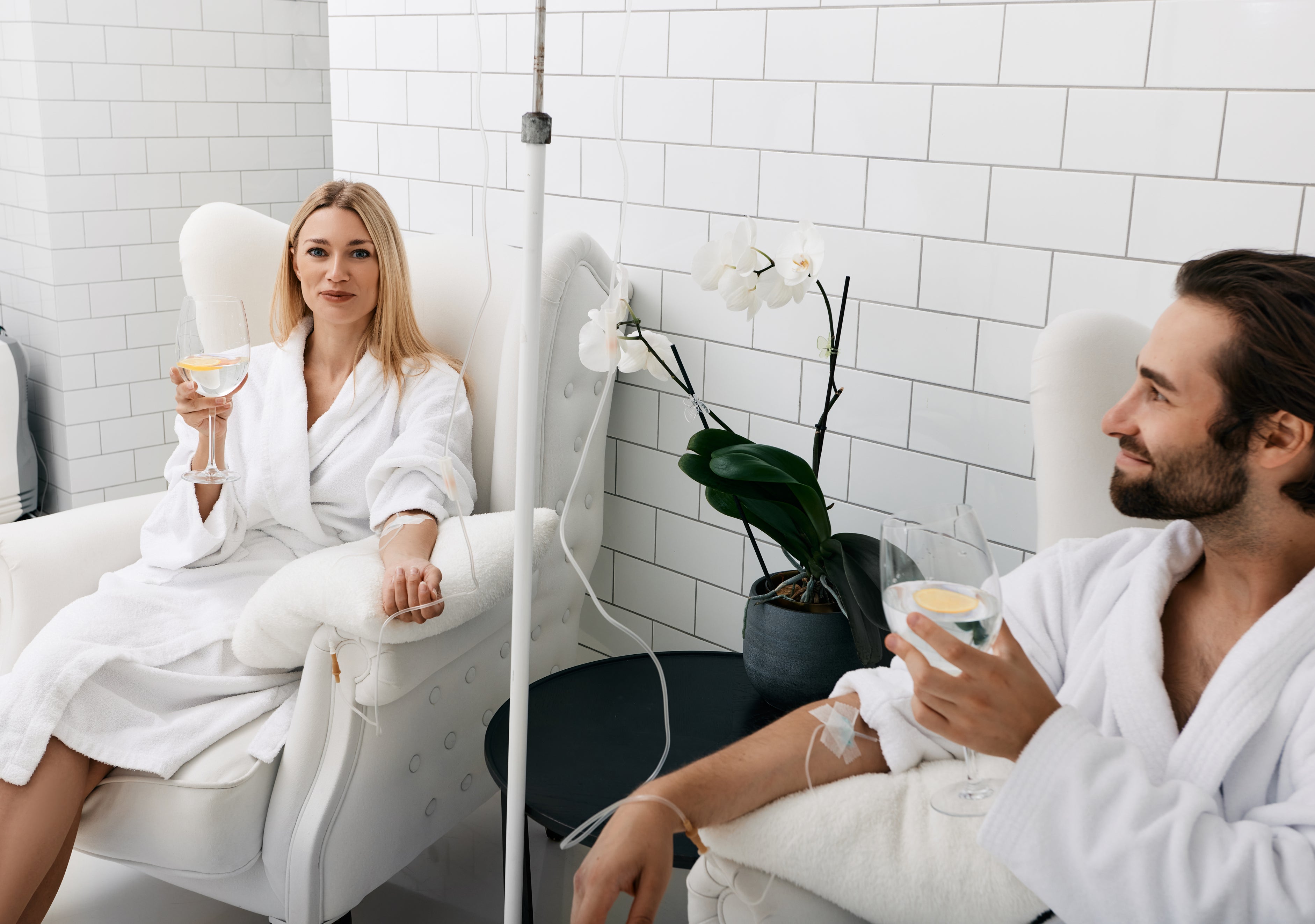The only thing worse than a lousy pillow is a bad mattress!
Your mattress is so important to your quality of sleep as well as your health. The sad reality is, most people become accustomed to their soggy, lumpy, or springy mattress, so they don’t realize it is the cause of their lingering back pain or restless nights.
If this sounds familiar, it could be time for a new mattress. The Sleep Foundation recommends replacing your mattress every 6 to 8 years, although this can vary with individual needs and mattress type. A mattress's lifespan depends on a number of factors, including your weight, the type of mattress, quality (poor quality won’t last as long), and how well you take care of it. It may be time to say goodbye to your old mattress if you notice any of the following:
- It’s deformed: If there are big dents, its sagging underneath, or tears.
- It’s stained: A lot of people sweat as they sleep, which can cause mold, mildew, and unhygienic staining.
- It’s giving you allergies: Your mattress is likely the home of a colony of dust mites that can make it difficult to breathe or cause allergic reactions.
- It’s making you sore: If you wake up with aches and pains, especially in your lower or mid-back.
- It’s difficult to sleep: If you wake up groggy every morning, your sleep quality could be disrupted by your mattress.
A new mattress can positively impact your quality of sleep, as seen in a 2009 clinical trial. The trial found that those with a new mattress reported reduced back pain, reduced stress, and improved sleep quality. Additionally, old mattresses can contain an alarming number of allergens, including dust mites, mold, and bacteria. When you get a new one and use a mattress protector, you may also find your allergies are reduced!
Despite knowing all the benefits of a new mattress, many people stick it out with their old one, as shopping for a new mattress can feel overwhelming. It’s a big purchase that you can’t easily return if you find you don’t like it down the road. Also, there are so many different types of mattresses on the market, making it difficult to choose the right one.
Shopping For a New Mattress: Which Type is Best?
All mattresses are not created equally. Think of it this way; a cheap fiber stuffed pillow is very different from a sobakawa pillow. The cheap pillow won’t be as comfortable and can cause neck and shoulder pain, where the sobakawa pillow will feel great, support your head and leave you feeling rested. The same thing happens with mattresses. A cheap, poor-quality mattress could give you back and shoulder pain and make it difficult to sleep.
To help understand the world of mattresses, here are the most common types you will find.
Pillow-top mattress
These sound pretty luxurious but aren’t always the best choice. The mattress's top layer has an added upholstery layer, usually consisting of plush fiber and foam material. You cannot flip these mattresses, and they can wear out faster.
Innerspring mattresses (coil)
This is the most common type and the traditional mattress, sometimes paired with a box spring. Inside there is a spring system with pocketed coils covered by padding and material. The more coils there are inside, the firmer and more supportive the mattress will feel. Fewer or older coils that have lost their spring won’t be as supportive.
Foam mattresses
These are increasing in popularity as of late. The foam is often made from viscoelastic (memory), latex, or polyurethane that can be manufactured in different densities, providing different degrees of support and firmness. This includes memory foam that will contour to your body as you sleep. In some cases, a gel is added to a foam mattress to dissipate body heat, providing the mattress with a cooling effect. These are great at reducing transfer motion, so if you sleep next to someone who tosses and turns all night, you should consider a foam mattress.
Waterbed
These haven’t been as popular since the late 1990s, but I’d be remiss if I didn’t include them. Waterbeds have a water chamber inside a frame that lays on top of a platform. Some are designed to limit the amounts of waves, and others are “free-flowing.”
When picking a new mattress, there are a few key things to consider. What you find comfortable won’t be the same as what someone else finds comfortable. Comfort is subjective, so the best way to describe your mattress preference is through “firmness.”
Do you prefer a firmer or softer mattress? Different firmness rating scales rank a mattress, from being extra soft to extra firm. Typically, certain body types, sleeping position, and if you are prone to pain will determine the level of firmness that is best for you. Here are recommendations based on your sleeping position and weight:
- Stomach sleepers: If you sleep on your stomach, more pressure is put on your lumbar spine when you sleep. To avoid creating a U shape with your back, you need support. You should go with a firm or extra firm mattress, along with a stomach sleeper pillow. This will provide you with the necessary support and also give you more breathing room.
- Side sleepers: You have the most extensive selection as a side sleeper, although there are specific considerations you should make. On your side, there are certain pressure points on your hips and shoulders. If your mattress is too soft or too firm, it can cause misalignment. If you are under 130 pounds, you could go with an extra soft to medium soft mattress. A medium-soft to medium mattress is excellent for those between 130 and 230 pounds, and if you are over 230 pounds, a firm mattress is best. If you sleep on your side, it is not recommended to use an extra firm mattress. A sobakawa pillow is adjustable and provides the perfect amount of head support.
- Back sleepers: As a back sleeper, more pressure is put on your lower back. Back sleepers should avoid soft mattresses as this can cause the torso to sink, creating a U-shape with your body resulting in strain. For pain-free sleep, stick with medium to extra firm and pair with a supportive millet pillow.
Many people routinely flip or rotate their mattresses out of habit and guidance passed down from their parents, but many don’t know why and how often you should do it.
Flipping involves turning it over, so the side that was previously against your bedframe or box spring is now what you’ll sleep on. Rotating involves spinning it 180 degrees so the place your head once rested is directly under your feet.
Not all mattresses need to be flipped or rotated, but it can prolong the lifespan of some types. For example, you wouldn’t flip a pillow-top mattress but could benefit from rotating it. Each manufacturer will provide its own guidance. Generally speaking, most brands recommend flipping it every three months up to a year.
Not ready to spring for a new mattress? Do this instead!
When it’s time to get a new mattress, you want to invest in a good one, and if you aren’t ready for a new mattress, there are some things you can do to help fix your old one.
- Get a mattress topper.There are plenty of different mattress toppers that range in firmness and can help even out any lumps and provide extra support.
- Mattress cover. If dust mites or other allergens make it challenging to sleep, you can add a mattress cover (great for new mattresses, too!). This will act as a barrier between you and these pesky mattress dwellers. Some mattress covers provide extra padding and are waterproof for additional comfort and protection.
- Invest in quality pillows. Even if you have a bad mattress, a quality pillow-like stomach sleeper pillow, millet pillow, or sobakawa pillow can help keep you aligned and provide the necessary support. Choose a pillow suited to your sleeping position to make sure you aren’t adding any strain to your neck or back.
Although a mattress may not be the most exciting thing to spend your money on, it is important. Multiple surveys and polls have stated that the average American spends nearly half their life lying around in bed. More specifically, an astounding 36 years on your mattress! And with more people working from home (or working from bed), this number is likely to rise.
Mattresses – there’s the good, the bad, and the ugly. Which one you sleep on is up to you. Before buying a new mattress, think about what you love about your current mattress, what you don’t like, your sleeping position, and your weight. If there are additional factors at play like partner disturbance or pain points, be sure to take these into account. Your mattress and pillow are paramount for a restful sleep, so be sure to choose the ones best for you.






